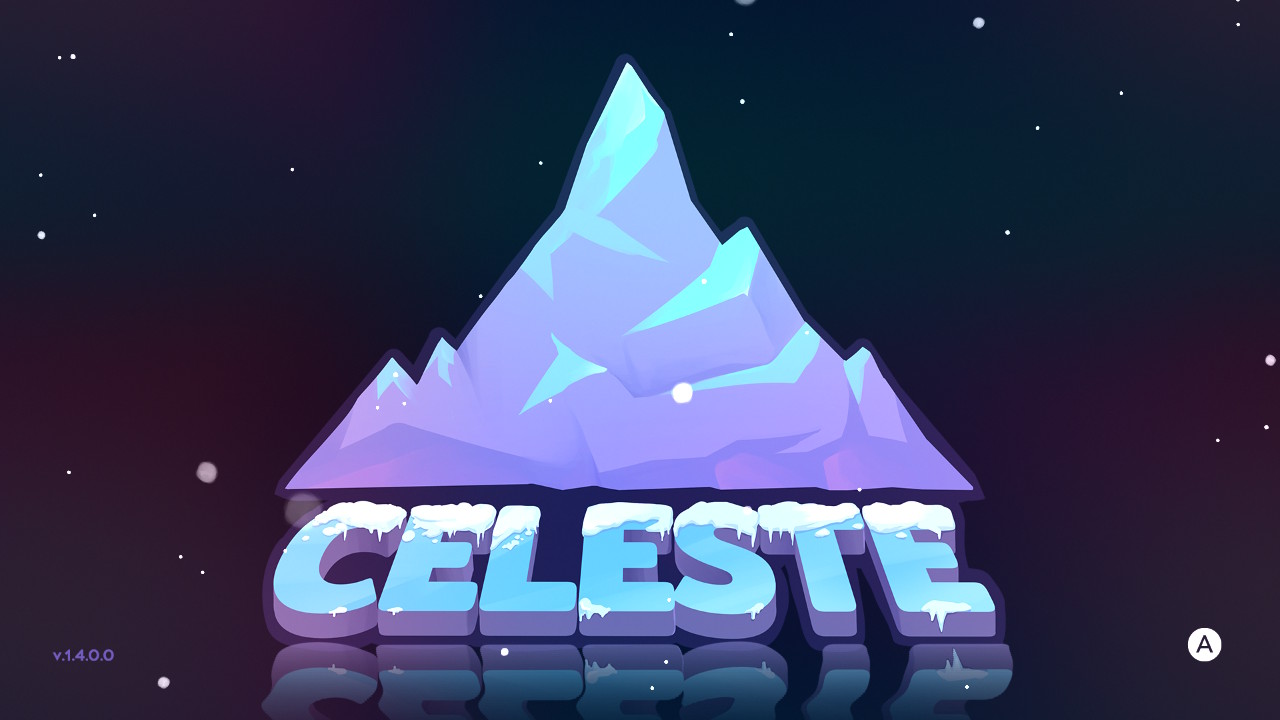
Climbing Mountains with Celeste (Switch)
Celeste is the most demanding game I’ve ever played. Beneath its friendly, minimalistic pixel-art aesthetic lurks devious level design and multi-layered gameplay. The experience is enriched by an affecting story and accompanied by music that will inspire you to overcome death itself—and there will be many deaths.
Make no mistake: you’ll need physical dexterity to play Celeste, spatial reasoning to undertake its challenges, and persistence to overcome its steep difficulty. To its credit, the game teaches you how to push beyond your limits. New gameplay mechanics pop up throughout, testing your skills against an ever-increasing standard of competency. The game whispers, “Yes, that last bit was hard, but look how far you’ve come! You can do this.”
By the time the credits rolled, I believed it.
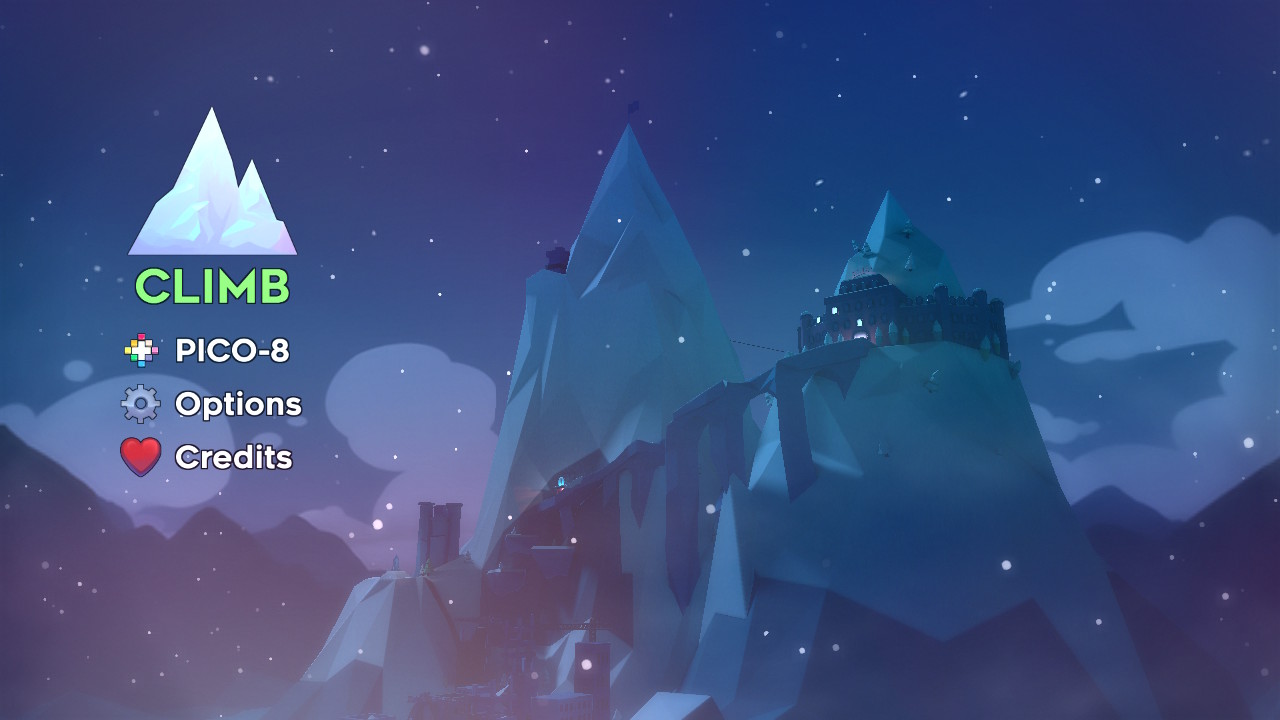
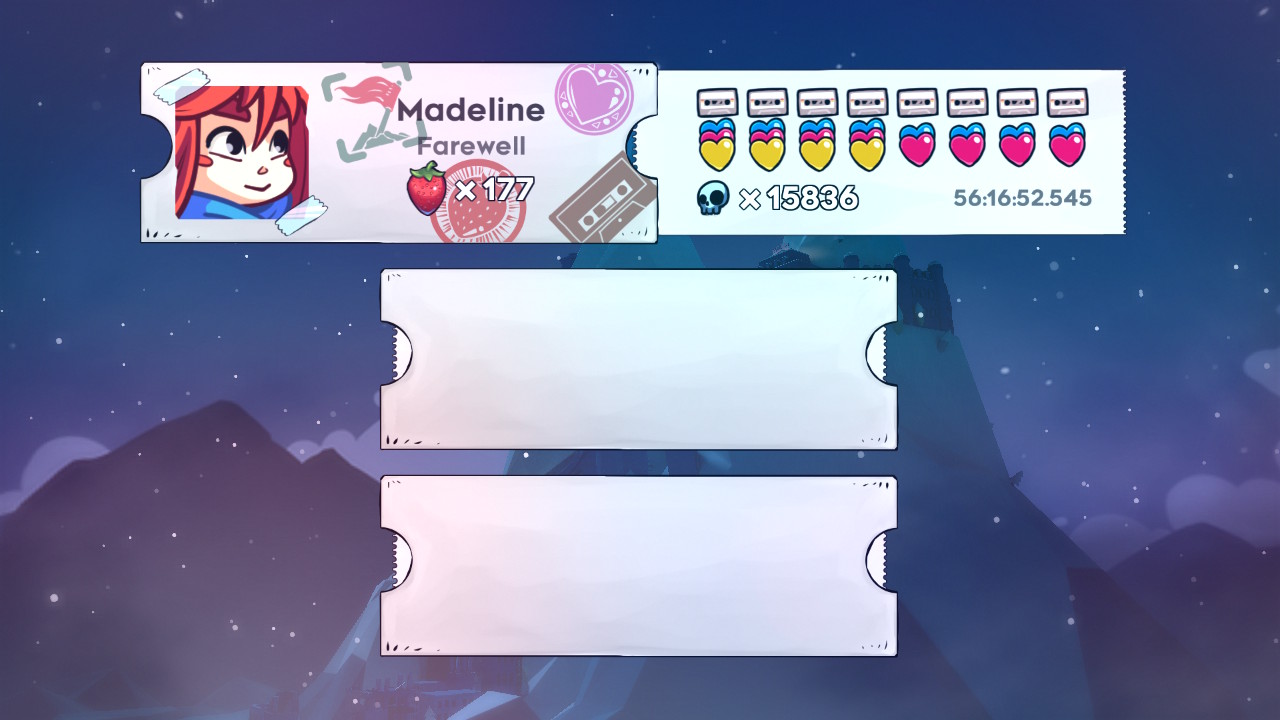
The Story
The story follows twenty-something Madeline on her quest to summit Mt. Celeste. Along the way, she must contend with the mountain’s perils and her own self-doubt, the latter of which manifests in physical form as a mirror-verse doppelgänger (nicknamed Badeline by fans). This “piece of you” is destructive and antagonistic; the way in which Madeline wrestles with Badeline forms the emotional core of the narrative.
Despite the somber subject matter, the game’s chunky pixels imbue the experience with warmth, as do the illustrated character portraits that animate to quirky, garbled voice samples. A wry sense of humor lightens the atmosphere further, making Madeline’s journey endearing rather than dreary or oppressive.
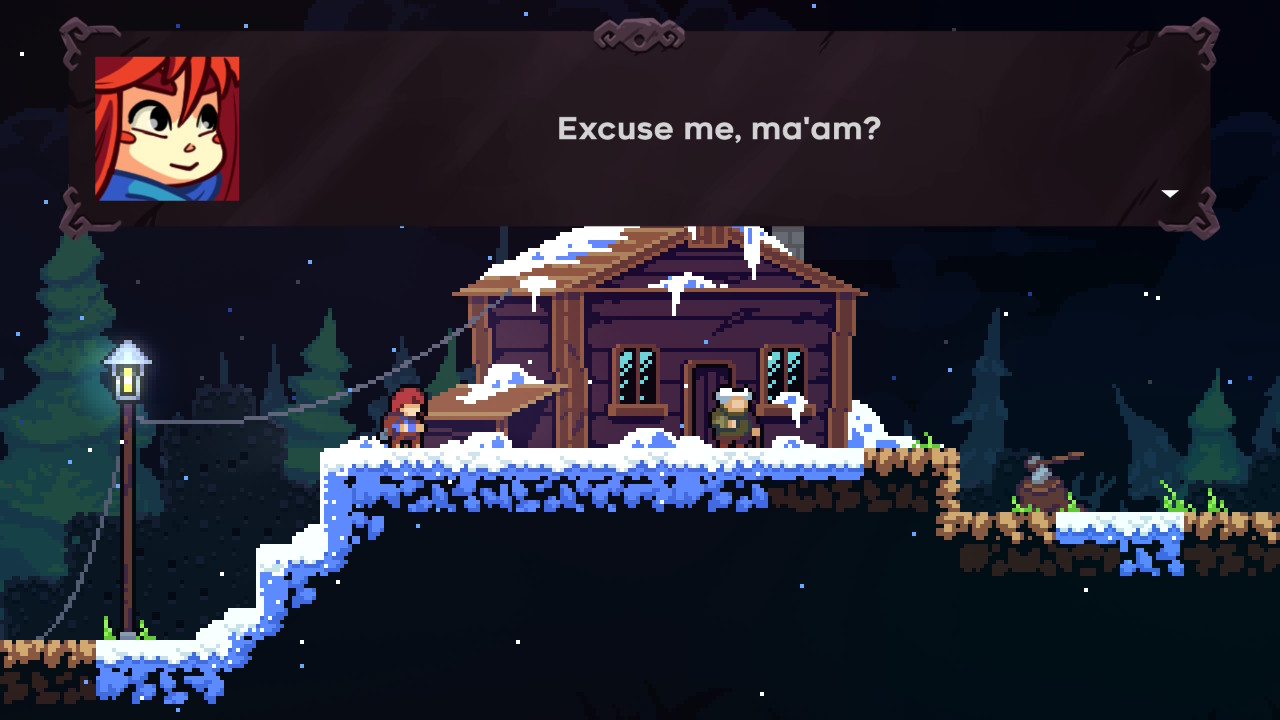
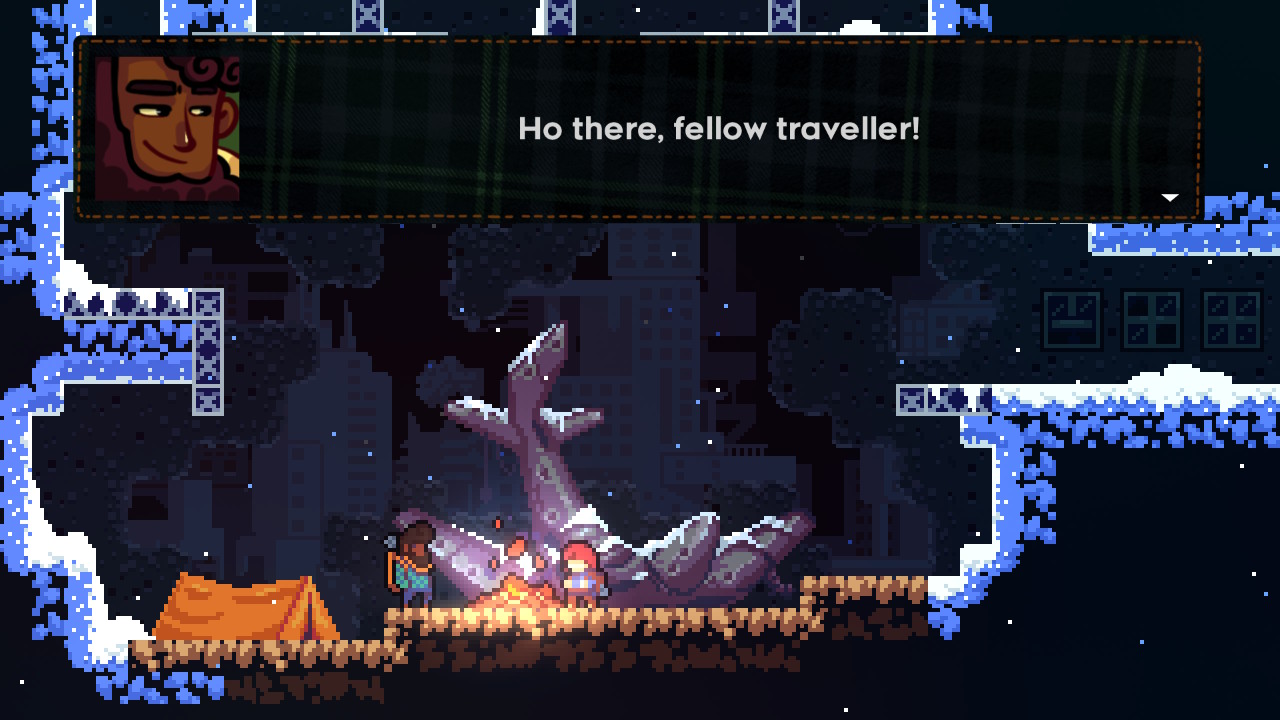
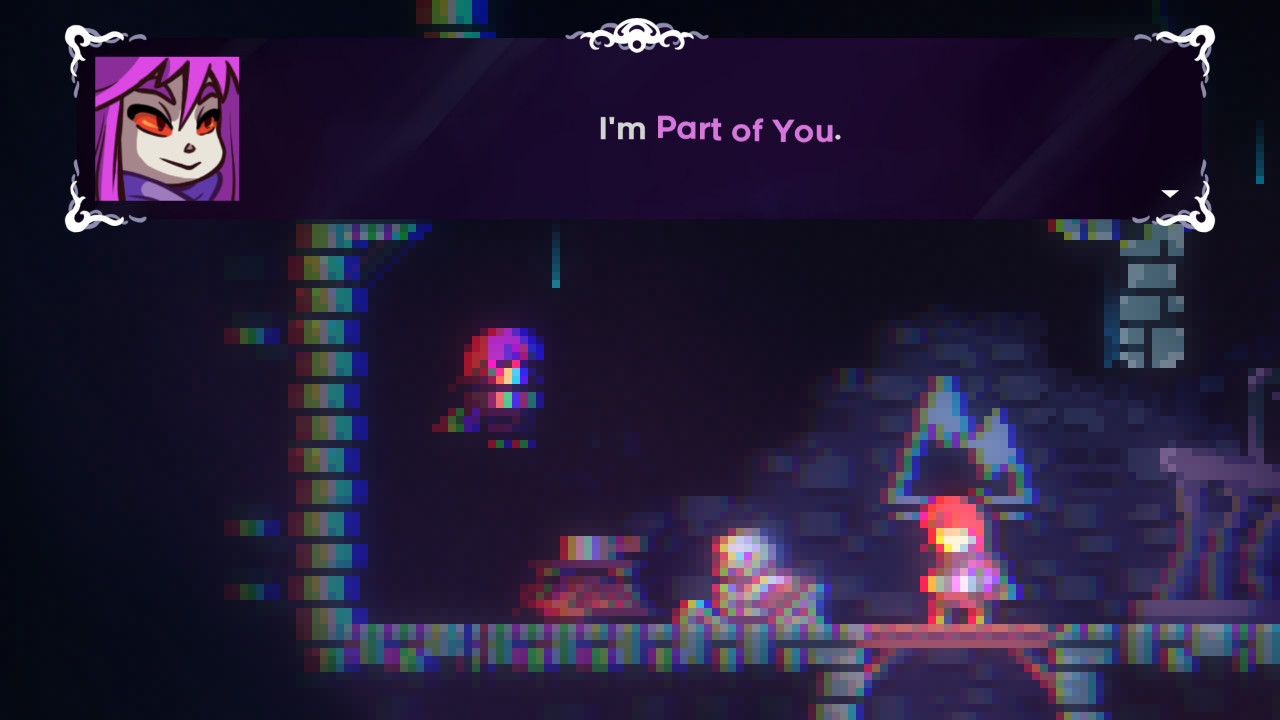
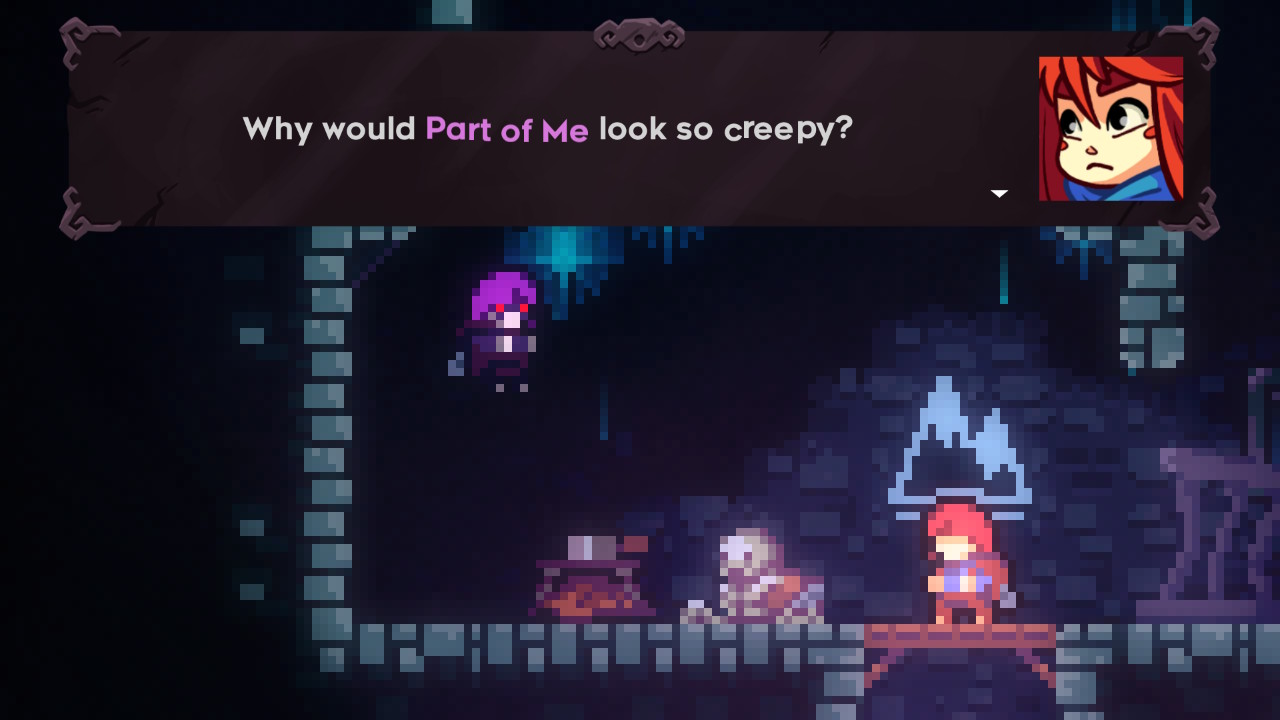
Celeste does veer into scary territory with a few nightmare sequences; these suggest that Madeline is wrestling with issues deeper than Badeline’s frequent disparagement. In one cutscene, she admits to a character named Theo that she suffers from panic attacks. Theo shares a coping mechanism passed down from his grandfather, which is then seamlessly parlayed into a new gameplay mechanic known as the feather (more on that later).
This is but one example of the narrative and gameplay working together in harmony. Another is when Madeline and Badeline—spoiler alert—nearly destroy themselves in a climactic battle. In the aftermath, they are both weary of fighting. They are both willing to try reconciling their differences. When they do, the player is granted use of the double-dash technique. The narrative analogy is simple but effective: Madeline and Badeline are literally stronger when they work together.
The Gameplay
Movement in Celeste is measured and refined. Most importantly, it’s responsive. Madeline is weighted such that she can stop on a dime or dash about quickly, building sufficient momentum to reach almost any platform or ledge. As her move-set develops, so does her capacity for more impressive combinations. When you die, it doesn’t feel unfair. It’s difficult and demanding, yes, but the onus for your demise is yours alone.
In the speed-running community, pro gamers have discovered button combinations that launch Madeline halfway across the screen. Magic of that ilk is beyond me. I stick to the maneuvers the game teaches you, which are plenty challenging on their own. Apart from instances with the feather (wait for it), the controls grant you an enormous sense of freedom. I felt gratified every time I managed to perfect a string of well-executed moves. The victories felt victorious because they were hard-earned.
Madeline controls like a dream when using a directional pad. Jumping, dashing, climbing, and wall-jumping felt like extensions of my thoughts. The directional pad allows for exact cardinal and diagonal inputs, unlike the dreaded feather. Ah, yes. The feather. The feather is my only true gripe with Celeste. Simply put, it allows Madeline to perform swooshes and loop-de-loops in the air. The joystick is ideal for this, and I loved using it in a handful of instances.
What I didn’t love was rapidly switching between the joystick and the directional pad in the same level. I found that my fingers often overcompensated, smashing buttons and dashing Madeline to her doom. Other times, my fingers felt like sluggish lard cakes; instead of achieving a delicate arch, they slung Madeline into spikes like a rock from a slingshot. I would have preferred giving the feather its own levels, separate from those designed for jumping, dashing, climbing, etc.
The Experience
The game provides several lenghty chapters broken up into sub-chapters, and these will put your platforming powers to the test. The replay value is sky high, not only because you’ll die a lot but because there are plenty of collectibles. Chief among them are the strawberries tucked away in hard-to-reach places and guarded by hazardous environmental puzzles. While nonessential to the narrative, strawberries will give you serious bragging rights… and really sore thumbs. Golden strawberries are something altogether impossible—but I’ll let you discover those on your own.
Unlike a Mario game, Celeste has relatively few enemies. Except for a deranged hotel manager named Mr. Ochiro and a fish-like nightmare monster that wants to eat you, the mountain is your deadliest antagonist. Sure it’s a metaphor for overcoming adversity, but it’s also brimming with thousands of ways to die. Madeline can plummet to her death, impale herself on spikes, squash herself between mechanized platforms, burst into flames in a pit of lava, etc. Thankfully the game is bloodless. Madeline vanishes in a puff of pixels and respawns quickly, ready to try (and die) again.
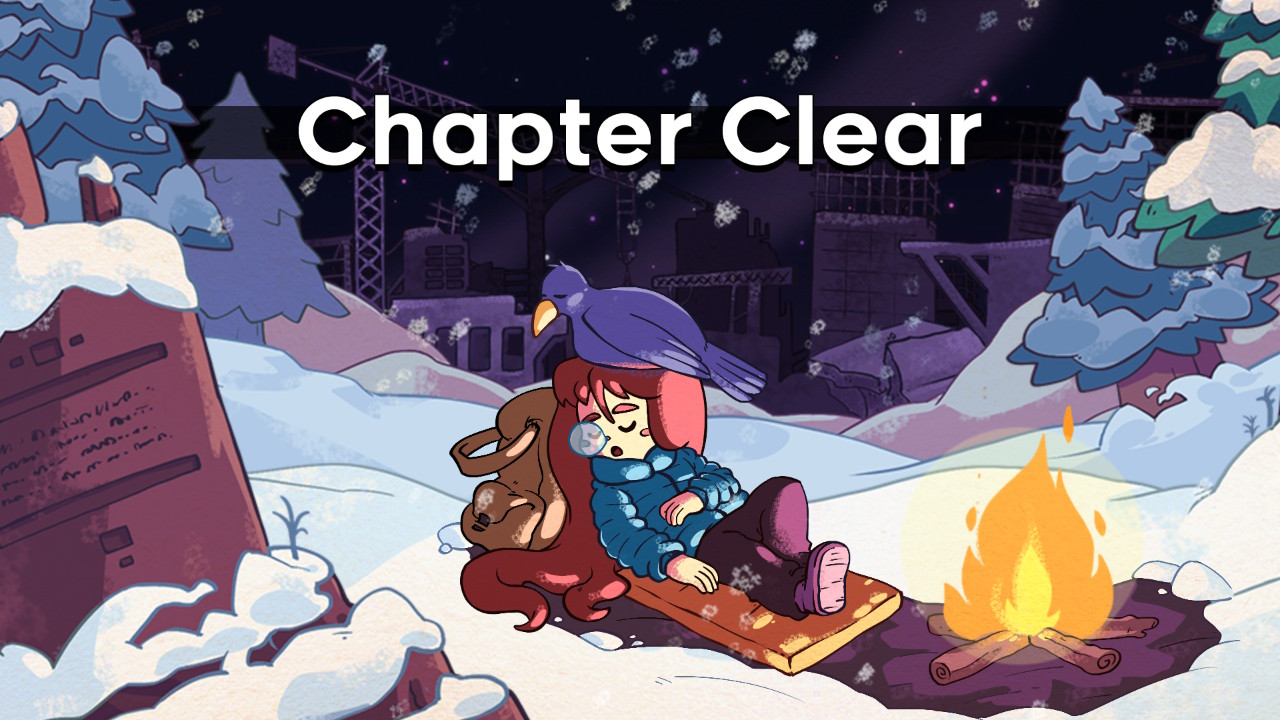
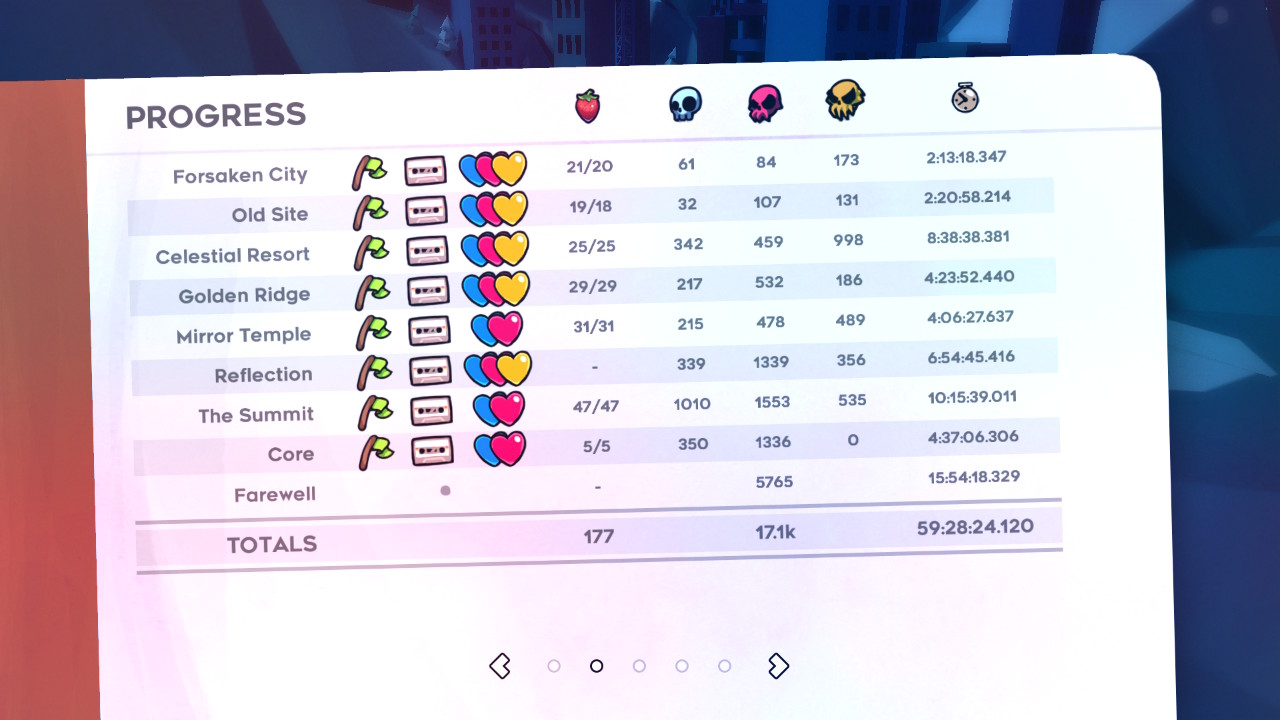
Rather morbidly, each chapter shows a tally of your deaths. It also lists your best completion times, enticing masochists like myself to replay chapters faster and with fewer fatalities. If that’s not enough, nihilistic folks can assault their reflexes by undertaking B-side and C-side level variants. These are unlocked by recovering cassette tapes hidden throughout the default A-side chapters.
If you weren’t crying already, the B-sides will obliterate your endurance with their extreme length. The C-sides are mercifully shorter, but they require true mastery of Madeline’s move-set. You can’t fudge any of your jumps here.
At this point, I’ve only completed about half of the C-sides. Like strawberries, the B and C-sides are not part of the game’s narrative, so you can skip them if you value your sanity. Seriously, consider skipping them. If you must satisfy your curiosity, look up some videos on YouTube.
Summary
Few gamers possess the mental and physical stamina required to beat Celeste. I’m still working my way through the C-sides and Farewell DLC, the latter of which has devastated my poor thumbs. Clearly this is not a game for everyone; and yet, it’s a game that almost anyone can play. A generous assist mode is available at your discretion. I’ve used it twice, first to slow down time so that I could perfect a tricky jump, and second to enable invincibility after failing a particularly tough sequence 998 times. My overall death tally sits above 15,000. I’ve recorded a lot of gameplay clips showcasing the toughest bits I’ve encountered—and eventually overcame! I still hold my breath when rewatching them. The memories are that visceral.
Musically, the game is inspiring, scary, energetic, melancholic, ponderous, and unforgettable. Composer Lena Raine has poured tangible emotions into the music. The B-side remixes are also wonderful for how they tackle familiar tunes with new energy. Raine’s soundtracks for two other games, Moonglow Bay and Chicory: A Colorful Tale, are similarly poignant and tailored to their narratives.
All that’s left to say is that the production value for Celeste is top notch. The gameplay, controls, level design, narrative, music, and extra content make it a dense, satisfying experience. The game deserves every bit of praise that has been heaped its way. I suppose you could say the game deserves a “mountain” of praise… but I won’t say that because it’s an easy dad joke. After playing Celeste, anything easy doesn’t feel earned.
Afterthoughts
While poking around the web, I learned that the character of Madeline is regarded as a transgender icon. This surprised me because sexuality is not a theme explored in Celeste. Madeline displays no overt sexual characteristics, either visually in her design or narratively in her dialogue.
In the Farewell DLC release, which was not part of the original game, a new victory screen does show a trans flag in Madeline’s room. I haven’t completed the Farewell chapter yet thanks to its absurd difficulty, so I wouldn’t have known what that flag represented if not for the Internet.
According to the game’s co-creator Maddy Thorson, who identifies as a transgender woman, Madeline was not conceived as transgender. Paraphrasing Thorson, transitioning from Matt to Maddy in real life spurred thoughts about whether or not Madeline was also transgender. Thorson asserts that Madeline was always transgender even if neither of them knew it at the time of the game’s release.
As a writer, I understand how fictional characters are often in a state of flux. From their names to their backgrounds, everything is made up, so it can change at the whim of the author. However, once you release your story to the world, the canon is established. Folks read it, folks watch it. Changing or revealing Madeline to be transgender feels a bit like George Lucas editing the cantina scene from Star Wars for the umpteenth time. I remember Han shooting first, or at least the implication that he did, but that’s not what the modern Disney-owned cut shows.
Similarly, I remember Madeline as a determined young woman with flowing hair who climbed a mountain. I rooted for her despite initially lacking the skills to help her reach the summit. Thousands and thousands of deaths later, we succeeded. Alongside Theo, Granny, Badeline, and even the troubled Mr. Ochiro, we conquered Mt. Celeste. We did it together.
Real or imagined, that’s a memory I’ll cherish.
